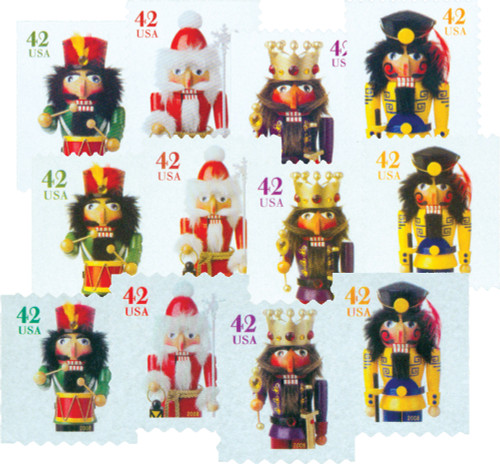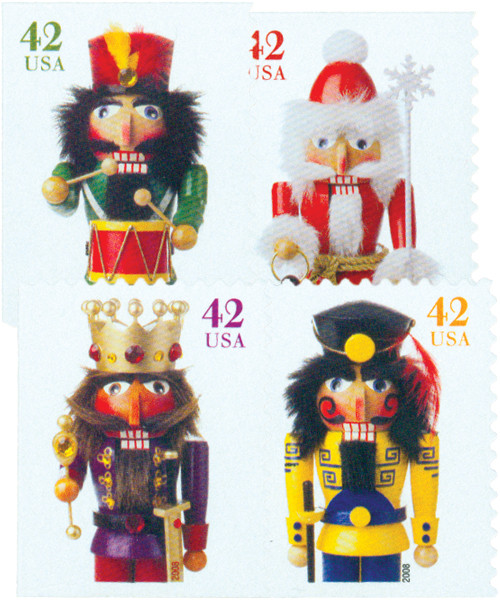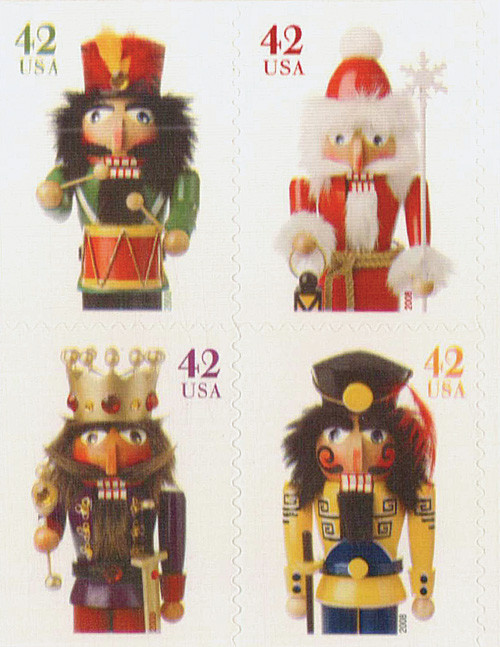
# 4360-71 - 2008 42c Holiday Nutcrackers
The tradition of collecting nutcrackers has become popular in America only within the last 60 years. American soldiers stationed in Germany during World War II admired the craftsmanship of these enchanting figurines. They found humor in their expressions and lifelike characteristics. Brought back as a gift for loved ones, nutcrackers became a familiar collector's item and traditional keepsake to display during the holidays. While 21st century nutcrackers are offered in countless varieties, collectors still favor the king and soldier most. These designs were made desirable over three centuries ago by talented German woodcrafters. Nutcrackers originally found their birthplace in the German regions of Sonneberg and Erzgebirge. During the 18th century, mining was the main source of income in this area. To earn extra money, miners would often carve wood during the winter months. Carvers would design the wooden nutcrackers to resemble powerful rulers. The craftsmen found enjoyment in placing the royal figurine at their service to perform the lowly task of cracking nuts. Eventually, this area became known throughout Europe for producing these whimsical wooden figurines. The popularity of collecting holiday nutcrackers spread to America following World War II, when U.S. troops brought them home as gifts.
The tradition of collecting nutcrackers has become popular in America only within the last 60 years. American soldiers stationed in Germany during World War II admired the craftsmanship of these enchanting figurines. They found humor in their expressions and lifelike characteristics. Brought back as a gift for loved ones, nutcrackers became a familiar collector's item and traditional keepsake to display during the holidays. While 21st century nutcrackers are offered in countless varieties, collectors still favor the king and soldier most. These designs were made desirable over three centuries ago by talented German woodcrafters. Nutcrackers originally found their birthplace in the German regions of Sonneberg and Erzgebirge. During the 18th century, mining was the main source of income in this area. To earn extra money, miners would often carve wood during the winter months. Carvers would design the wooden nutcrackers to resemble powerful rulers. The craftsmen found enjoyment in placing the royal figurine at their service to perform the lowly task of cracking nuts. Eventually, this area became known throughout Europe for producing these whimsical wooden figurines. The popularity of collecting holiday nutcrackers spread to America following World War II, when U.S. troops brought them home as gifts.












